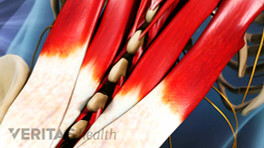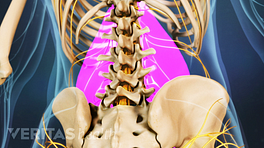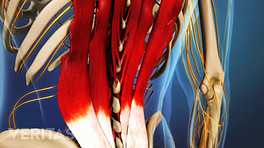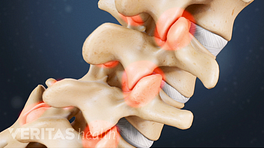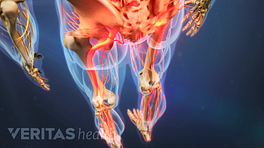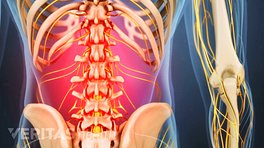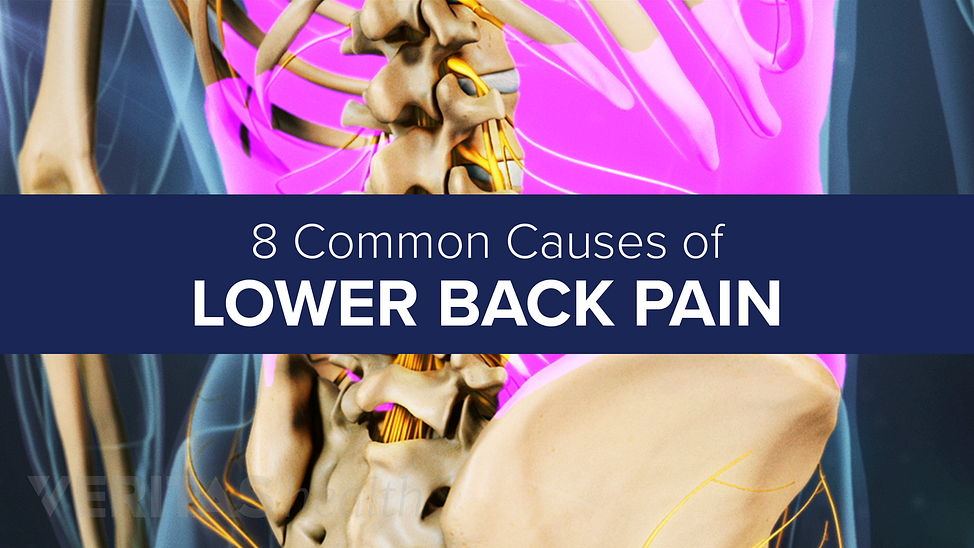
The lumbar spine, or lower back, is made up of a network of bones, joints, nerves, ligaments, and muscles that support the weight of the upper body and provide mobility for everyday motions. Injury or degeneration to any of the structures of the lumbar spine can cause lower back pain symptoms that range from relatively mild to severe and debilitating. Although diagnosing the exact cause of lower back pain can be difficult, the following 8 conditions are common causes of lower back pain.
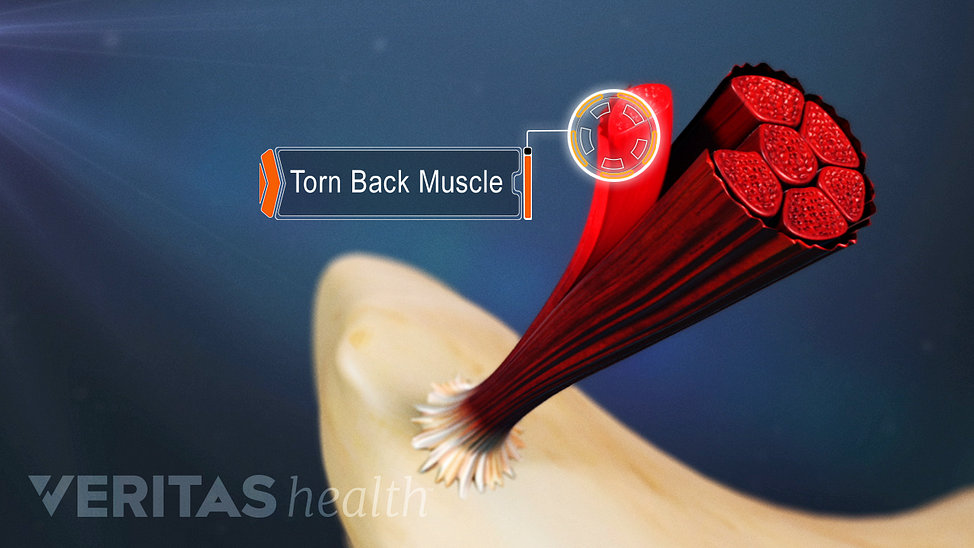
Muscle Strain
Muscle, tendon, ligament, and other soft tissue injuries cause the majority of lower back pain episodes. The two most common soft tissue injuries are muscle strains and lumbar sprains. Muscle strains (commonly called pulled muscles) occur when excessive stress causes a muscle to begin to tear. Lumbar sprains occur when the ligaments — tough, fibrous tissues that connect bones together — are overstretched or torn. In both cases, inflammation results as the body rushes blood to the injured tissue in order to restore it. This inflammation can lead to muscles spasms, tenderness, cramping, and intense lower back pain.
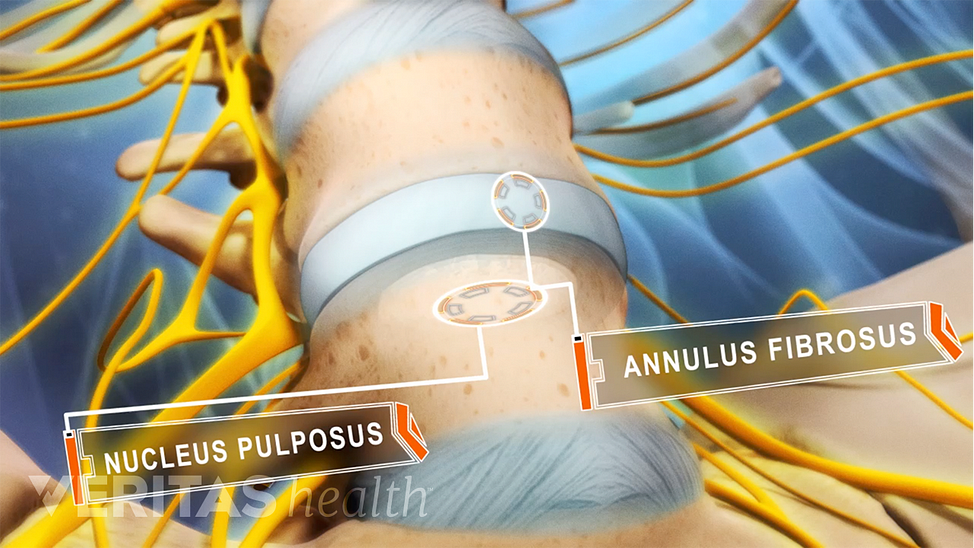
Lumbar Degenerative Disc Disease
As spinal discs age, they are naturally subject to degenerative changes that makes them less able to withstand shear forces. As forces are transferred through the disc, it can cause cracking and tearing in the disc’s tough outer ring (annulus). These cracks and tears in the annulus may cause pain by themselves, or they may allow the disc’s inner core to herniate, possibly resulting in nerve irritation and pain. Other degenerative changes may cause the disc to collapse and contribute to stenosis. Disc herniation and stenosis are covered in subsequent slides.
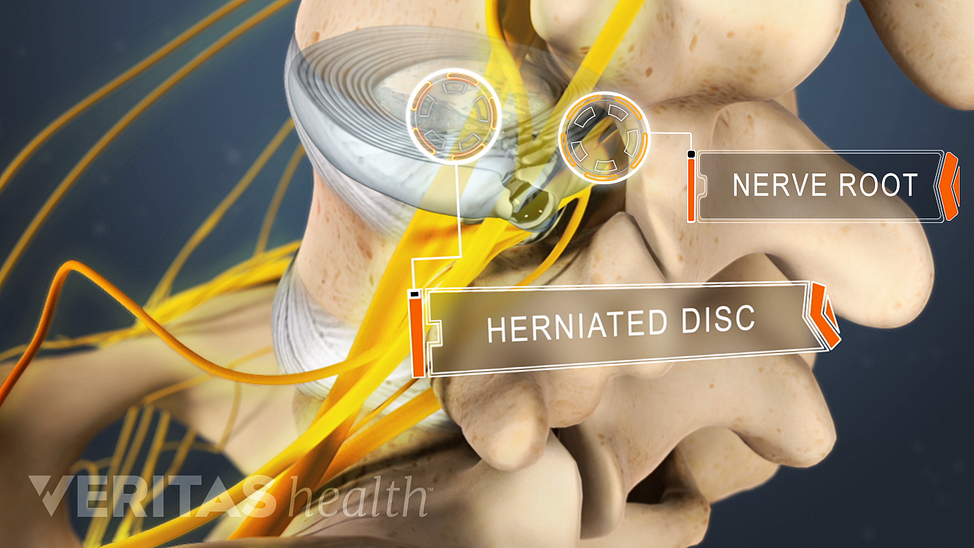
Lumbar Herniated Disc
If changes from degenerative disc disease cause the annulus to bulge, crack, or tear, some of the inflammatory proteins from the disc’s gel-filled inner core may leak out or herniate. If these inflammatory proteins irritate any of the nerve roots in the lumbar spine, it often leads to symptoms of lower back pain and leg pain, numbness, and weakness.
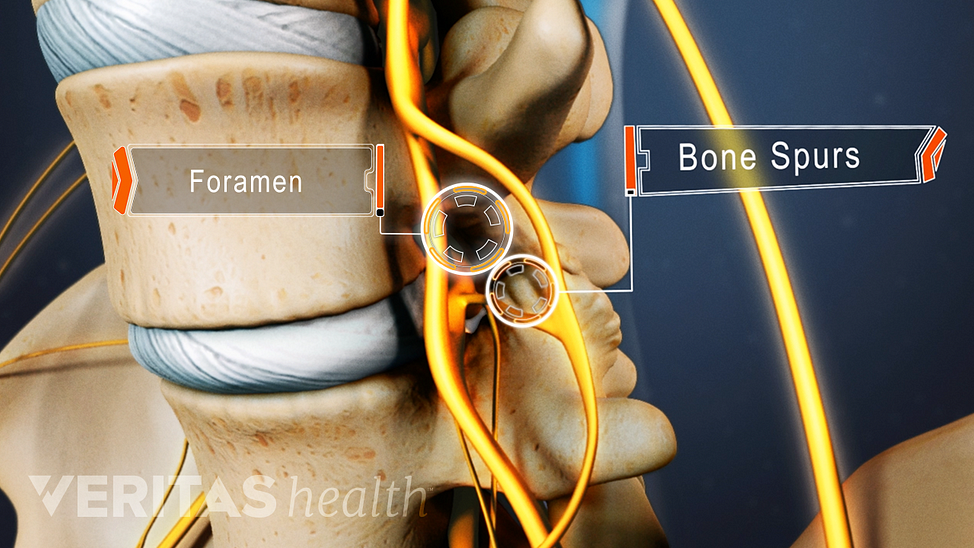
Lumbar Spinal Stenosis
In addition to losing hydration, the spine may develop bony growths called osteophytes over time, and the small stabilizing joints located between and behind the vertebrae (facet joints) may become larger. These natural degenerative changes don’t always cause pain, but if they cause the spinal canal and other spaces to narrow, pain from nerve root compression can occur as nerve roots have less space to exit the spine. This condition is called spinal stenosis. Nerve root compression from spinal stenosis can results in symptoms of lower back pain and sciatica.
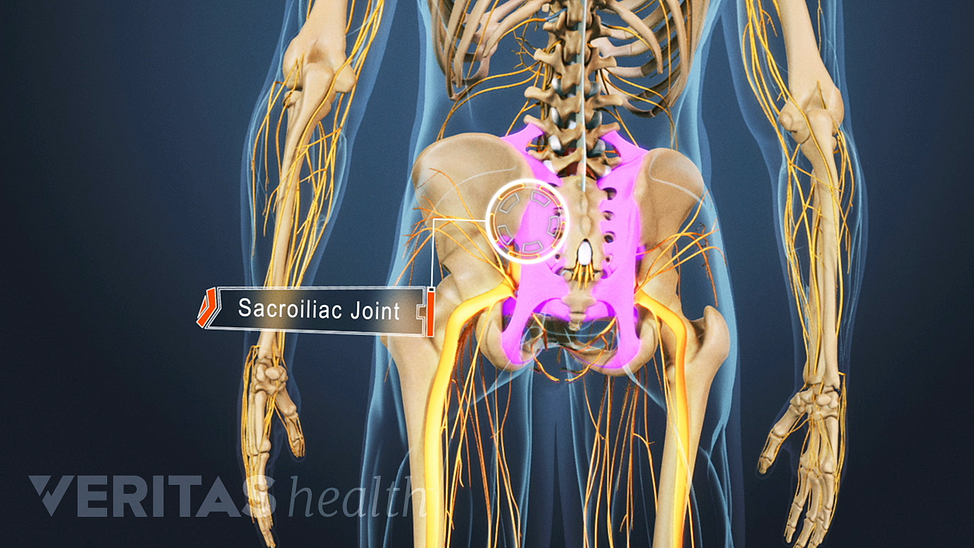
Sacroiliac Joint Dysfunction
The sacroiliac joint, which connects the hip bones to the sacrum, helps to absorb shock between the upper body and the pelvis and legs. Too much movement (hypermobility) in the joints can cause the pelvis to feel unstable and cause pain that is felt in the lower back, hip, and/or groin area. Contrarily, too little movement (hypomobility) in the sacroiliac joint may lead to muscle tension and pain that is felt on one side of the lower back or buttocks, and radiates down the back of the leg.
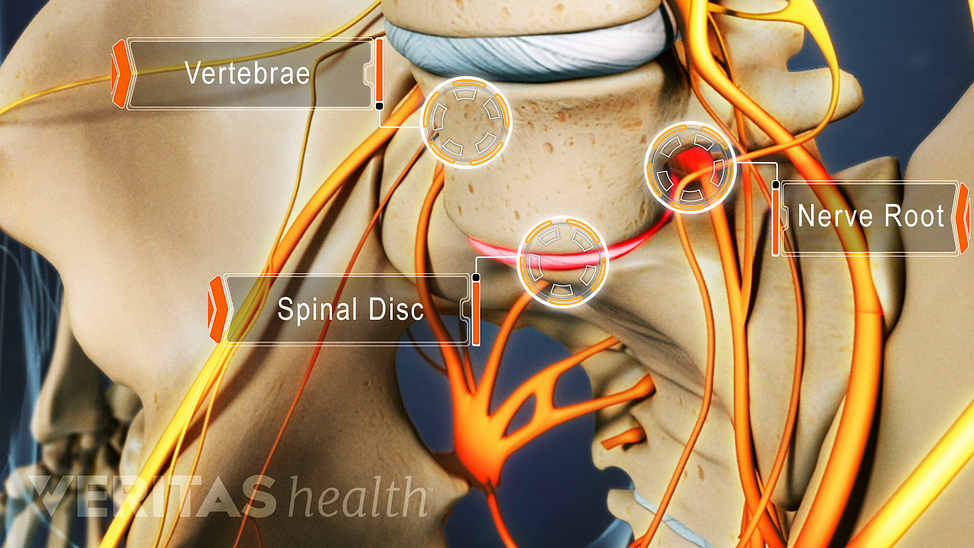
Isthmic Spondylolisthesis
Isthmic spondylolisthesis occurs when one of the spinal vertebrae slips forward in the spinal column over the vertebrae below it. This is typically caused by a defect in the pars interarticularis — a small bone that connects facet joints. When the vertebra slips forward, the spinal disc is forced to withstand shear forces that can cause the disc to crack and tear, which may result in lower back pain. In addition, as the disc becomes flatter as it degenerates, there is less room for nerves to exit the spine, which can result in nerve root compression that leads to lower back pain and sciatica.
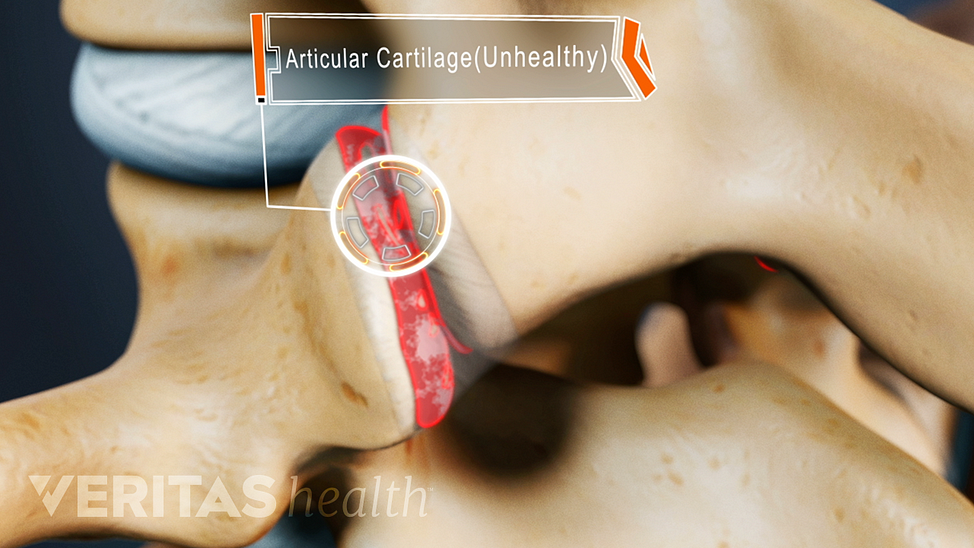
Facet Osteoarthritis/Facet Joint Dysfunction
The facet joints are lined with smooth cartilage to allow for movement as the two sides of the joint rub against one another. Osteoarthritis occurs when the cartilage breaks down and causes friction between the bones, inflammation, and the development of osteophytes. When osteoarthritis occurs in the lumbar spine, it tends to result in lower back pain, stiffness, and muscle spasms. If osteophytes compress nearby nerve roots, it can lead to symptoms of tingling, numbness, or weakness in the lower limbs.
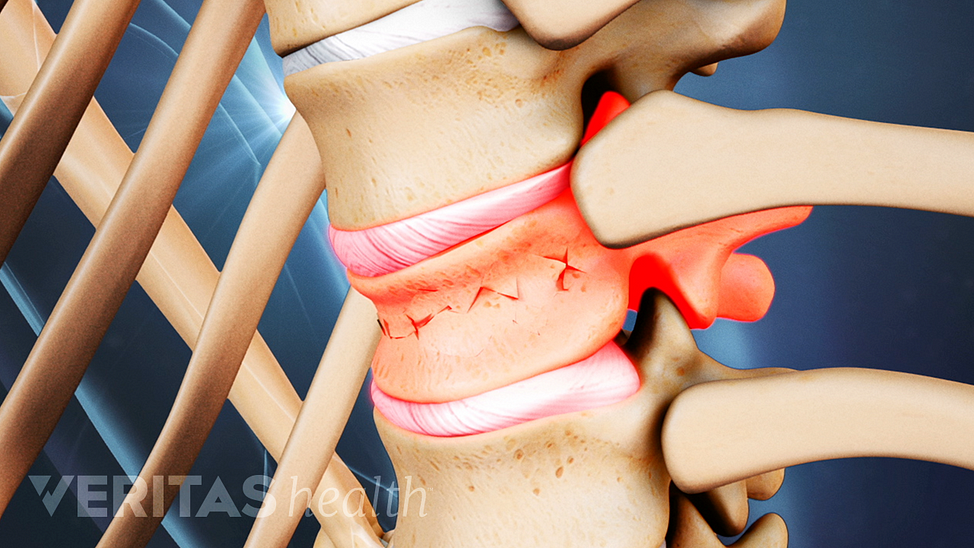
Compression Fracture
A spinal compression fracture is a break in one of the spinal vertebrae. Spinal fractures most commonly occur in the thoracic spine as a result of osteoporosis, but they may also occur in the lumbar spine and be caused by tumors or trauma. When a spinal compression fracture occurs in the lumbar spine, symptoms typically include a sudden onset of pain, pain when standing or walking, and limited spinal mobility.
